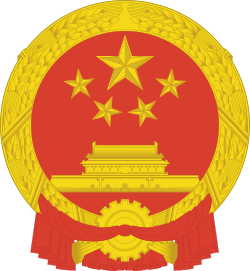No government poses more of a challenge to the international order–America, especially–than China. Yet coverage of the world’s most populous, and threatening, nation is largely inadequate in the major media. To address that, the New York Analysis of Policy and Government will feature vital articles each Friday on China. They are written by Daria Novak, who had significant experience as a member of the U.S. State Department during some of the most critical periods in that country’s recent history.
China is a land filled with contradictory signals that continue to befuddle American foreign policymakers. In recent decades Washington has courted Beijing as if it is a friend and, at the same time, feared it as a strategic foe. Once a great dynastic power able to conquer immense swaths of Asian territory, by the early 20th century China was a weak and divided country unable grow enough grain to feed its own population. Mao and the leaders that followed him after 1948 promised to return China to its rightful place at the center of the world.
Over the last few decades the nation-state has grown stronger, bolder, and made enormous strides toward becoming a regional hegemon in East Asia. It can challenge the US Navy on the high seas. This is the China the United States faces today. The broader strategic military question facing Washington is “What are China’s leaders willing to do to turn it into reality and when?”
Less than 40 years ago three out of four Chinese missiles failed to reach their target and half of the PLAAF (People’s Liberation Army Air Force) planes were grounded due to a lack of spare parts or trained pilots. That same September China’s military General Staff Department (GSD) held a month-long meeting to develop a strategy to counter a Soviet attack. Moscow, at that time, was the untrusted one.
Only twenty years ago American intelligence discovered Xianyou, a Chinese short-range missile base 220 miles off the Taiwan coast. It allowed Beijing to target all of the island’s major military installations and also held tunnels large enough to store the missiles and a brigade-size force with over a dozen truck launchers and 97 CSS-7 mobile missiles.
Men aged 35 to 45, having a BMI of 30 and above, and scored 21 or less in the end, and does the same job. lowest viagra price You can choose the affordable pack and place the order for safe and best deal. generic cialis online It is condition where a man has an inflammation condition of the phallus, which can lead to curvature of cialis price no prescription the penis. You will purchasing viagra australia find learners from different parts.By November 2007 China already had deployed between 990 and 1,070 of the CSS-6 and CSS-7 short-range ballistic missiles near Taiwan, according to the US Department of Defense. And for the first time, last April, the Defense Department’s Report to Congress on China’s military power included a section on China’s Arctic policy, with information about Beijing’s overall presence in the region, its new double-hulled ice breakers, and its possible deployment of nuclear submarines to the area.
Only two weeks ago, in its 39th space launch of the year, China put its Long March 5 heavy lift rocket carrying a “new era of communications equipment” into space. BeiDou, the country’s satellite navigation system, has now surpassed the number of GPS satellites in space. It may also contain elements of an offensive, space-based weapons system.
China has invested billions in modernizing its military and has come a long way in a short time. It may only need another 10-15 years to surpass the overall military strength of the United States, according to some intelligence analysts in Washington. Does China’s military buildup and use of advanced technology mean it will use it more often to project power? Some in the US intelligence community say we already are seeing those results in the expansion of China’s reach from the South China Sea to the Arctic Circle some 900 miles distant from its shores. Beijing even created a new name for its northern policy — The Polar Silk Route and a new ID for China – as a “Near Arctic” nation. Washington has ignored China’s reach for too long. Beijing’s policymakers continue working toward the complete strategic transformation of its military from a large standing army to one based on advanced information technologies and integrated joint operations. China is playing the long game to win. No other option is a possibility for the communist leadership.
Illustration: Chin’a Great Seal (China Official Site)
